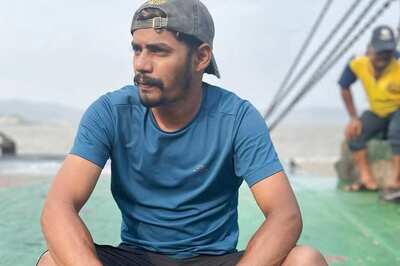
views
BANGALORE: The name of Benjamin Lewis Rice is very prominent among the foreigners who contributed for the development of Kannada language. Today when there is so much discussion at the government level on the medium of instruction, it is interesting to note that Rice, a British man who was an expert in Kannada, gave priority to introduce Kannada language in schools in the 19th century and started Kannada medium schools at hobli level. His father Benjamin Holt Rice, a missionary of London Mission, and his wife came to Bangalore in the early 1800s. His mission was to spread the message of Christ and convert people into Christianity. He was in charge of the Bangalore parish. He learnt Kannada painstakingly to acquaint himself with local manners and customs. B L Rice was born in a congenial Kannada atmosphere in Bangalore in 1837. Senior Rice has the credit of writing textbooks in History, Geography and other subjects in Kannada. He wrote hymns in Kannada which are sung in many of the churches. His wife is said to be the person behind to start a Kannada school (which is near BBMP main building) in 1842. “Born to such parents, B L Rice did his initial schooling in Bangalore up to eight years. He had learnt the basic Kannada language. Later, in 1848, his parents sent him to England for higher studies and he returned to Bangalore when he was 23 years old,” says Dr H L Srinivasamurthy, a Kannada Professor who has done his PhD on ‘Contribution of B L Rice to Kannada’.Rice joined as head master to the Central school (which later became the Central college). He was also assigned to do School Inspector’s job. Then, he started travelling across all the districts in the Mysore province and became interested in the age-old inscriptions. Later, that then Maharaja of Mysore Krishnaraja Wadiyar III, invited Major Dickson from Madras Regiment to take the photographs of the inscriptions available across the State. After his job was done, the question of understanding Kannada arose and the then Chief Commissioner L Bowring entrusted the work to Rice. Rice who had basic knowledge in Kannada, with the help of scholars studied and published “Mysore Inscriptions” in 1879. Later, several more volumes on inscriptions followed. One of his significant works was ‘Epigraphia Carnatica’ (published in 12 volumes).Murthy says that Rice had written a letter to the Chief Commissioner demanding him to set up a permanent fund to publish age-old literary works. He even made the then Mysore Government to release `5,000 to buy 300 copies of Kannada dictionary. “Rice was a teacher, School Inspector, Director of Public Instruction in Mysore and Coorg, Chief Census Officer and Secretary to the Education Department. He also served as the Director to Archeological Research,” Murthy says. Rice collected some great literary works of Kannada written on palm leaves and published them. They are Nagavarma’s Karnataka Bhashabhooshana (1884), Bhattakalanka’s Shabdhanushasanam (1890), Vikramarjunavijaya (1890), Pampa Ramayana (1892), Kaviraja Marga (1898) and Kavyavalokana (1903).


















Comments
0 comment